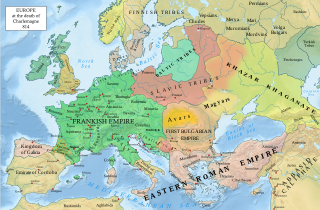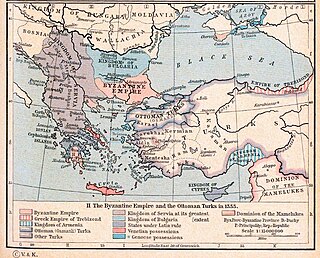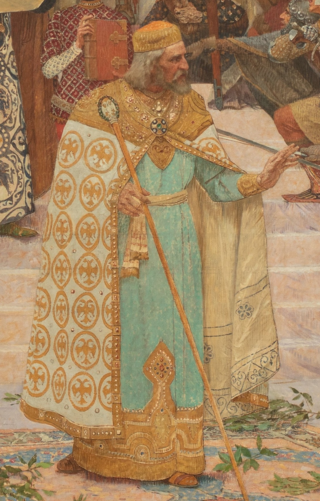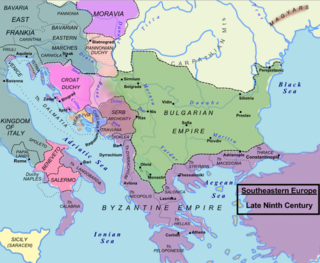The article's lead section may need to be rewritten.(November 2016) |
This article will be a family tree of Serbian monarchs that includes only monarchs and their descendants who are relevant to the succession.
The article's lead section may need to be rewritten.(November 2016) |
This article will be a family tree of Serbian monarchs that includes only monarchs and their descendants who are relevant to the succession.
| Zavida | Vukanović | ||||||||||||||||||||||||||||||||||||||||||||||||||||||||||||||||
| Tihomir Grand Prince | Stefan Nemanja Grand Prince | Nemanjić | |||||||||||||||||||||||||||||||||||||||||||||||||||||||||||||||
| Vukan Grand Prince | Stefan Grand Prince, King | Lazarević | |||||||||||||||||||||||||||||||||||||||||||||||||||||||||||||||
| Dmitar | Stefan Vladislav King | Stefan Uroš I King | Stefan Radoslav King | Branković | |||||||||||||||||||||||||||||||||||||||||||||||||||||||||||||
| Vratislav | Stefan Dragutin King | Stefan Uroš II Milutin King | |||||||||||||||||||||||||||||||||||||||||||||||||||||||||||||||
| Vratko | Elizabeth | Stefan Vladislav II King | Stefan Uroš III of Dečani King | Stefan Konstantin King | |||||||||||||||||||||||||||||||||||||||||||||||||||||||||||||
| Milica Princess | Lazar Prince | Stefan Uroš IV Dušan King, Emperor | Simeon Uroš Emperor | ||||||||||||||||||||||||||||||||||||||||||||||||||||||||||||||
| Stefan Prince, Despot | Mara | Vuk | Stefan Uroš V Emperor | Jovan Uroš Emperor | |||||||||||||||||||||||||||||||||||||||||||||||||||||||||||||
Pomorje, also known as the Lands of Pomorje, is a medieval term, used in Byzantine title, and at end of the 12th century, during the reign of Stefan Nemanja (1166–1196), inherited by Serbian monarchs, thus becoming part of the Serbian title, whose rulers were styled with the title: "crowned king and autocrat of all Serbian and coastal lands".
The Battle of Bileća was fought in August 1388 between the forces of the Kingdom of Bosnia, led by Grand Duke Vlatko Vuković, and the Ottoman Empire under the leadership of Lala Şahin Pasha. The Ottoman army broke into Hum, the kingdom's southern region. After days of looting, the invaders clashed with the defending force near the town of Bileća, north-east of Dubrovnik. The battle ended with an Ottoman defeat.

Prosigoj was a Serbian ruler believed to have ruled prior to c. 830. Serbia was a Slavic principality subject to the Byzantine Empire, located in the western Balkans, bordering with Bulgaria in the east. Mentioned in the De Administrando Imperio (DAI) from the mid-10th century, he succeeded his father Radoslav and was succeeded by his son Vlastimir.
Uroš II, also known as Primislav (Примислав) or Prvoslav (Првослав), was Serbian Grand Prince from c.1145 to 1162, with brief interruptions as ruler by Desa, his brother. His rule was characterized by a period of power struggle, not only of the Serbian throne between the brothers but between the Byzantine Empire and Kingdom of Hungary, of which he took advantage. He had two brothers Desa and Beloš, and a sister Helena of Serbia, Queen of Hungary. Furthermore, Uroš II also had to contend with the Second Norman invasion of the Balkans (1147-1149).

Pavle Branovic was the Prince of the Serbs from 917 to 921. He was put on the throne by the Bulgarian Tsar Symeon I of Bulgaria, who had imprisoned the previous prince, Petar after he had become a Byzantine ally. Pavle ruled for four years, before being defeated by Zaharija Pribislavljević, his cousin. Pavle was the son of Bran, the middle son of Mutimir of the Vlastimirović dynasty.
Petrislav was the Prince of Raška, a province under the Grand Principality of Doclea, from 1060 to 1083. He was appointed to govern Raška by his father, Grand Prince Mihailo I, who had reunited Raška into the Serbian realm after decades of Byzantine annexation.

According to the dubious late 13th century Chronicle of the Priest of Duklja, a Magyar leader named Kisa led an invasion into Bosnia, where he was decisively defeated by certain Ciaslavus somewhere on the Drina near a place called Civelino. Kisa's widow requested from the Magyar chief to give her another army to avenge his death. With an "unknown number" of troops, the widow went for Ciaslavus, encountering him somewhere in Syrmia. In the night, the Magyars attacked the Serbs, captured Ciaslavus and all of his male relatives. On the command of the widow, all of them were bound by their hands and feet and thrown into the Sava river. Seemingly the region of Syrmia wasn't conquered as the mythical successor Belo fought there at the battle of Bellina and concluded peace with the Hungarians.
Radoslav Hlapen was a Serbian magnate who served Serbian Emperor Stefan Dušan and Stefan Uroš V as vojvoda. He took part in the conquest of Byzantine lands, and was given a region north of Thessaly to govern in the early 1350s.
Tihomir of Raška was a Serbian nobleman, mentioned in the Chronicle of the Priest of Duklja, who served as the Grand Prince of Raška, from around 960 to 969. Raška is anachronistic reference to the Principality of Serbia.

Administrative divisions of medieval Serbia refer to regional administrative divisions of Medieval Serbia, from the 7th to the 15 the century.

Nikola Buća was a Serbian nobleman, merchant from Kotor, and protovestijar in the service of King Stephen Uroš III Dečanski of Serbia and Emperor Stephen Dušan the Mighty.
Vukosav Nikolić was mid-ranking Bosnian nobleman and a vassal to Kosača-Vukčić family under Sandalj Hranić, who served the Kingdom of Bosnia during the reign of his relative Jelena Gruba and Stephen Ostoja ,. He was the lord of Neum, the Popovo field, and the Lower Neretva region. He fell in battle during the Bosnian-Ragusan War (1403).
The siege of Braničevo was laid by Hungarian king Géza II against Byzantine-held Braničevo in late 1154.
Tanush Dukagjin, known as Little Tanush, was an Albanian nobleman, a member of the Dukagjini family, the son of Pal Dukagjini. He had four brothers: Progon, Pal II, Andrea, and Gjon Dukagjini.

The Bulgarian-Serbian War of 839–842 was fought between the First Bulgarian Empire and the Serbian Principality. It was the first conflict of the medieval Bulgarian–Serbian Wars.

The Battle of Demotika took place during the Byzantine civil war which began in 1352 between the forces of the Ottoman Empire and those of the Serbian Empire and Second Bulgarian Empire.
Vukmir Zlatonosović was a duke from the noble Zlatonosović family that ruled the area of Usora in the Kingdom of Bosnia.
The Byzantine–Serbian wars were a series of wars between the Byzantine Empire and the medieval Serbian states. Starting with the Sclaveni and Antae migrations into the Balkans, the succession of medieval Serbian states went through several periods of warfare with the Eastern Roman Empire.

The Didymoteicho Fortress or Castle, is an ancient and medieval hilltop citadel complex in the town of Didymoteicho, Thrace, Greece. It has been an important landmark since ancient times due to the strong fortification surrounding it. The castle is accompanied by several myths, one of the most famous is that of the Forty Arches, and is where Charles XII, King of Sweden, is said to have been imprisoned by the Turks.
Radin Jablanić was a powerful Bosnian nobleman, the oldest known member of the Pavlović noble family and the father of Pavle Radinović, who rose to prominence during the reign of Tvrtko I. His power and wealth made him one of the most powerful magnates and his family one of the most influential in Bosnian Banate and later the Kingdom of Bosnia, ruling the area around between Drina and Vrhbosna, and between Krivaja and Prača.